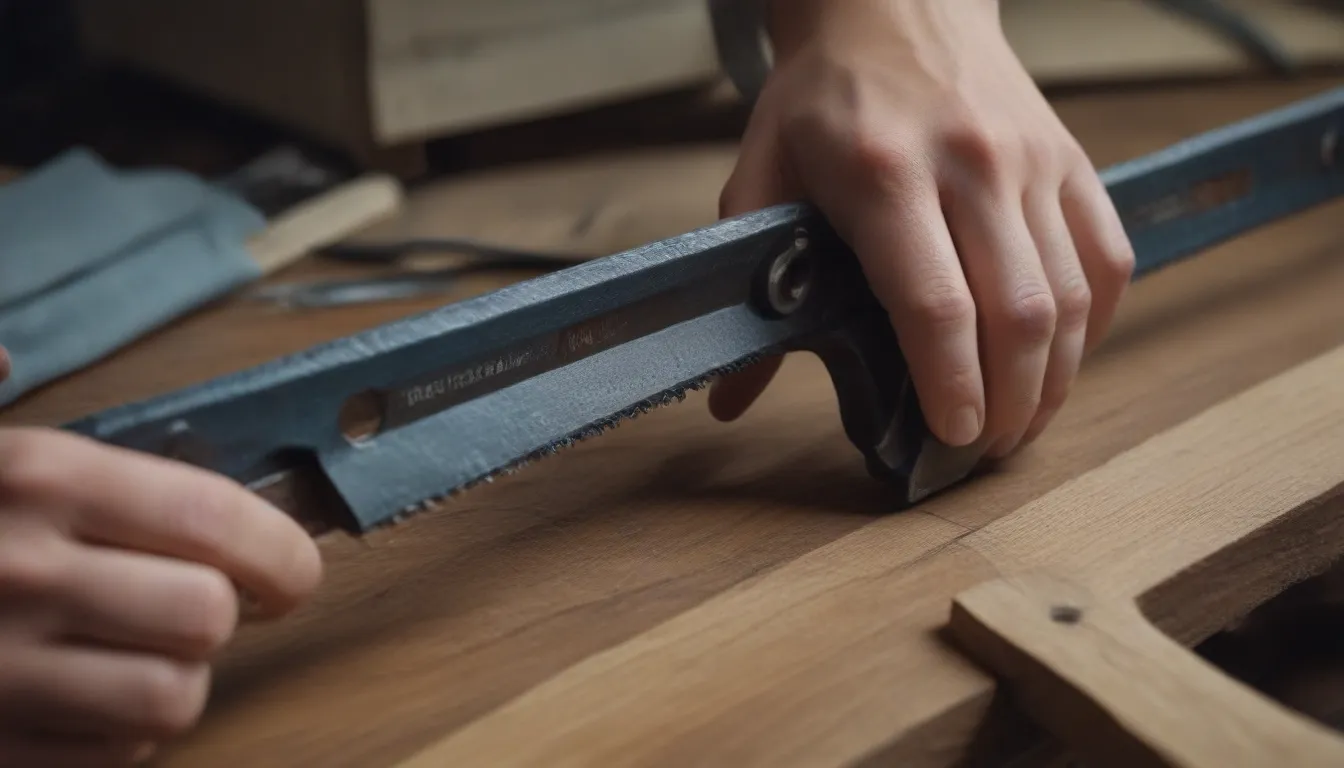The Ultimate Guide: How to Use a Hacksaw for Efficient Cutting

If you’re a DIY enthusiast or a professional handyman, having a hacksaw in your toolbox is a must. This classic tool is incredibly versatile and essential for cutting through tough materials like metal, plastic, and more. In this comprehensive guide, we’ll walk you through everything you need to know about using a hacksaw effectively, from understanding its parts to safety tips and expert advice on blade selection.
What Is a Hacksaw?
A hacksaw is a manual hand tool designed for cutting metal and plastic materials. Unlike traditional saws, a hacksaw has a unique blade alignment that allows it to cut on the forward stroke, making it incredibly efficient for precise cutting. With its removable blade and sturdy frame, a hacksaw is a versatile tool suitable for various cutting tasks.
Parts of a Hacksaw
To effectively use a hacksaw, it’s essential to understand its different parts and how they work together:
Hacksaw Frame
The hacksaw frame is typically C-shaped, with a handle at one end for easy gripping. The blade is attached to the open end of the frame, providing stability and support during cutting. Hacksaw frames come in different lengths, with 6, 10, and 12 inches being the most common sizes.
Hacksaw Blade
The hacksaw blade is a thin, metal band that ranges from 6 to 12 inches in length. It attaches to the frame using pins and needs to be tightened for optimal cutting performance. Hacksaw blades come in various tooth per inch (TPI) options, ranging from 3 to 32 TPI, with finer blades suitable for cutting delicate materials.
What a Hacksaw Is Used For
A hacksaw is primarily used for cutting thin metal materials such as aluminum, brass, steel, or copper. It is also suitable for cutting plastics like PVC, PEX, and ABS, making it a versatile tool for plumbing and construction projects. Here are some common materials you can cut with a hacksaw:
- Aluminum
- Brass
- Steel
- Copper
- PVC
- PEX
- ABS
While hacksaws are excellent for cutting hard materials, they are not suitable for cutting stone or other extremely tough substances.
Safety Considerations
Before using a hacksaw, it’s crucial to consider safety measures to prevent accidents and injuries. Here are some safety tips to keep in mind:
- Keep your hands and body away from the blade during cutting.
- Ensure the hacksaw blade is well-tensioned and straight to prevent breakage.
- Use appropriate pressure while cutting to avoid twisting the blade.
- Wear protective gear like gloves and goggles to shield yourself from sharp materials.
Remember, safety should always be a top priority when using any cutting tool like a hacksaw.
How to Use a Hacksaw
Now that you understand the basics of a hacksaw let’s dive into how to use it effectively for cutting various materials:
Mount Blade on Frame
- Retract the frame’s thumbscrew.
- Insert the blade into the retaining pins of the frame.
- Tighten the thumbscrew clockwise until the blade is secure and does not wobble.
- Apply machine oil to the blade for smooth cutting.
Clamp Work Material
- Secure the work material in a vise or use clamps to hold it firmly.
- Ensure the material is stable and will not move during cutting.
Hold Hacksaw Correctly
- Grip the hacksaw handle with one hand.
- Place the other hand at the far end of the frame for support.
Create Notch
- Press the hacksaw forward an inch or two to create a starting notch in the material.
- This notch will guide the saw during cutting.
Cut Material
- Use full, forward and backward strokes to cut the material.
- Apply firm pressure on the forward stroke, adjusting the amount based on the material.
- Ease up on the pressure during the backward stroke to maintain control and efficiency.
Tips for Using a Hacksaw
To ensure optimal performance and longevity of your hacksaw, consider the following tips:
When to Replace Your Hacksaw Blade
Hacksaw blades need to be replaced periodically to maintain cutting efficiency. Here are signs that indicate it’s time for a new blade:
- Coarseness feels the same running backward as forward.
- Difficulty cutting through materials.
- Blade appearance is worn or damaged.
Deciding Which Kind of Hacksaw Blade to Use
Selecting the right hacksaw blade is crucial for achieving clean cuts and preserving the blade’s lifespan. Consider the following factors when choosing a hacksaw blade:
- Match blade length to frame size for proper fit.
- Use blades with fewer teeth per inch for cutting aluminum to prevent clogging.
- Opt for high-speed steel (HSS) or bi-metallic blades for cutting ferrous materials.
- Blades with 18, 24, and 32 TPI are suitable for most cutting applications.
Hacksaw vs. Oscillating Multitool
While a hacksaw is a versatile and reliable cutting tool, an oscillating multitool can be an alternative for certain cutting tasks. Here’s a comparison of the two tools:
Hacksaw:
– Precise cutting
– Suitable for long cuts
– Cuts on the forward stroke only
– Manual operation
Oscillating Multitool:
– Faster cutting
– Less precise
– Suitable for shorter cuts
– Cuts on both forward and backward strokes
– Powered by electricity (battery or corded)
In conclusion, both tools have their unique advantages and are suitable for different cutting scenarios based on your specific needs.
Conclusion
In this detailed guide, we’ve covered everything you need to know about using a hacksaw efficiently and safely. From understanding its parts to selecting the right blade and mastering cutting techniques, you are now equipped to tackle various cutting tasks with confidence. Remember to prioritize safety, proper maintenance, and blade selection to maximize the performance of your hacksaw. Happy cutting!





